The most intriguing hole on the course is the 6th. It is a 417.9 yard down and over hills gem.
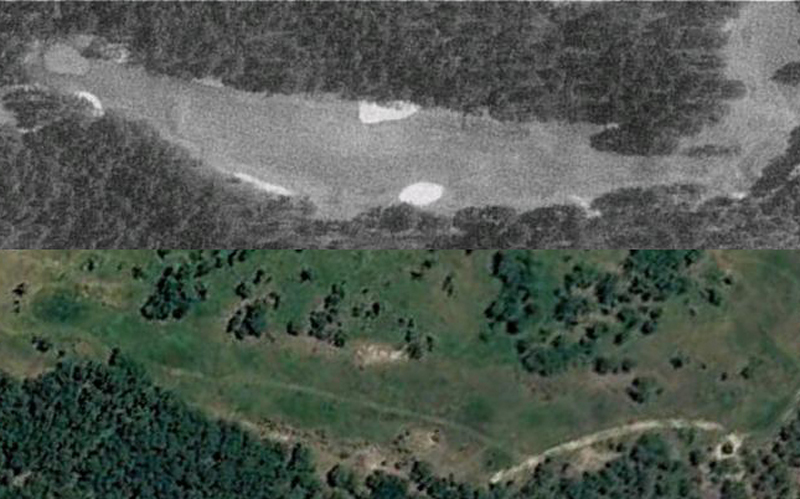
The tee is located on the high point of the course next to the 5th green. As was covered earlier, they loved this perch overlooking the property so much that they built a gazebo there. We don't take afternoon tea or watch sunsets like they did there anymore and we are the lesser for it. Obviously.
To give you an idea of the height, consider this photo of a gentleman who is apparently practicing his fox trot on that tee box.

I'll be taking photos of the place very soon and very sotto voce but in the meantime I'm getting my bearings and having fun with the digital wizardry of Google Earth. As you can see, the tee shot is considerably downhill. Even more so than it appears in the old photo. Photography sometimes doesn't quite seem to convey terrain with some drama to it.
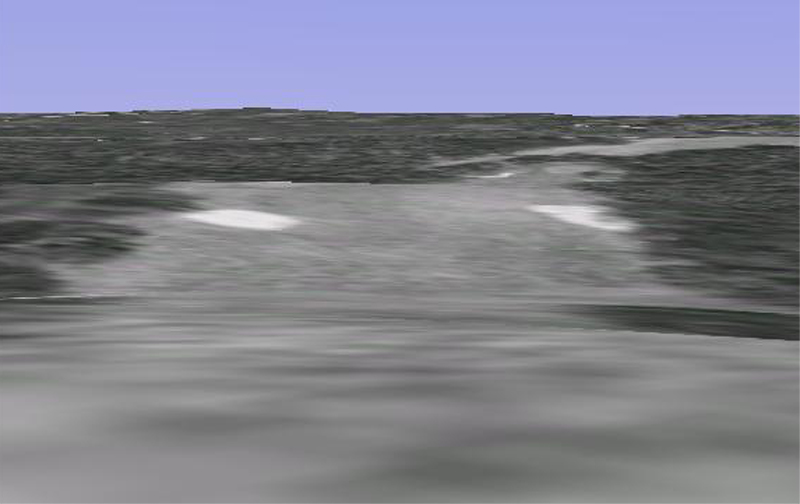
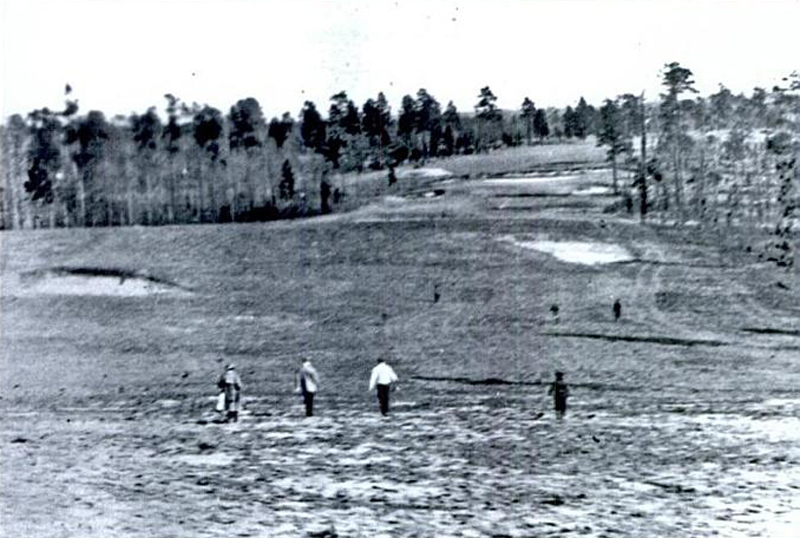
Looking back toward the tee from between the bunkers gives you something of an idea of the variation in height. Do you suppose Ross walked the property found the hill and essentially arranged the front 9 according to that hill?
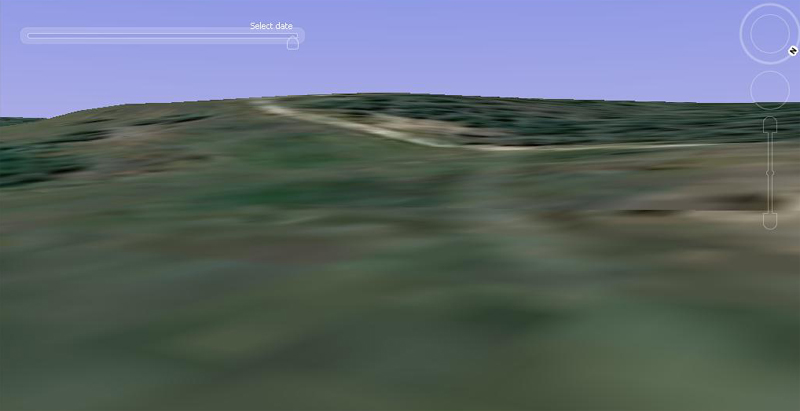
Then the land rises again before going down once again to the green. From this side angle view you can see how the land falls before cresting just past the bunkers. The green is marked so you can see how the hole bends a bit to the right.
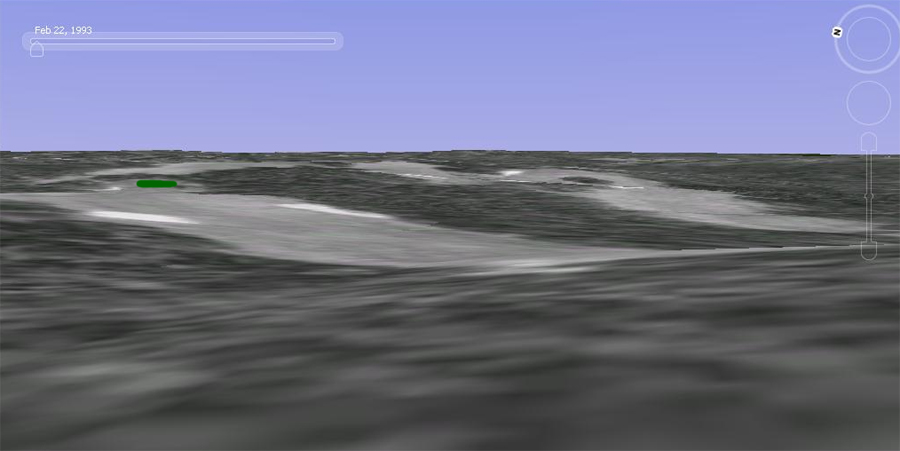
This would be the approximate approach shot after a good drive. The book (Overhills Oral History) said:
"A wiregrass mound on the left side of the fairway about 350 yards from the tee preceded two small bunkers flanking the green."
I can't make them out myself but I'm glad to know the description.

This side view shows how the land moves down from the fairway crest - then moves back up yet again.
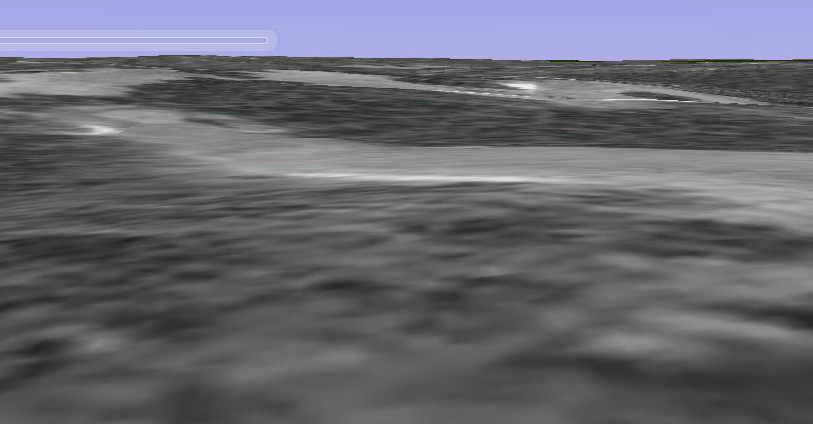
Finally, looking back from the green.
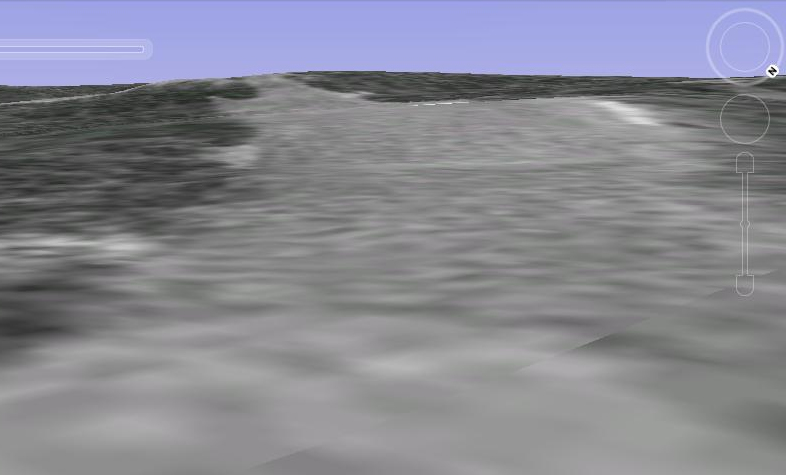
I'm not sure I know what you're referring to when you mention conspiracy theories
TEPaul
Mr. Paul there is a whole industry of conspiracy theories by delusional people regarding the JFK assassination, aliens, SPECTRE, fake moon landings, etc. Buzz Aldrin actually punched out one guy that kept bugging him. Many people actually believe all that. It makes it a little difficult to look at anything close to their dubious realm. This isn't to say that there aren't matters along those lines which aren't true.
It could be very interesting if somebody that had credibility put together a nice exposition regarding the historic influence of secretive cabals. Perhaps that is what happened with the Bush book you were referring to. I wasn't denigrating you or the Bush book. I'd have to look at it before I could render an opinion. I'll take you at your word that it contains things that are true and provocative. Again, I wasn't taking you to task in my commentary.
Eric, I noticed that as well. I'm not sure what could account for that. Something or somebody did do a lot of tree removal though.
Paul and Lester, I'll have a look at that in the future if I get the chance. Nice observation on that Paul.